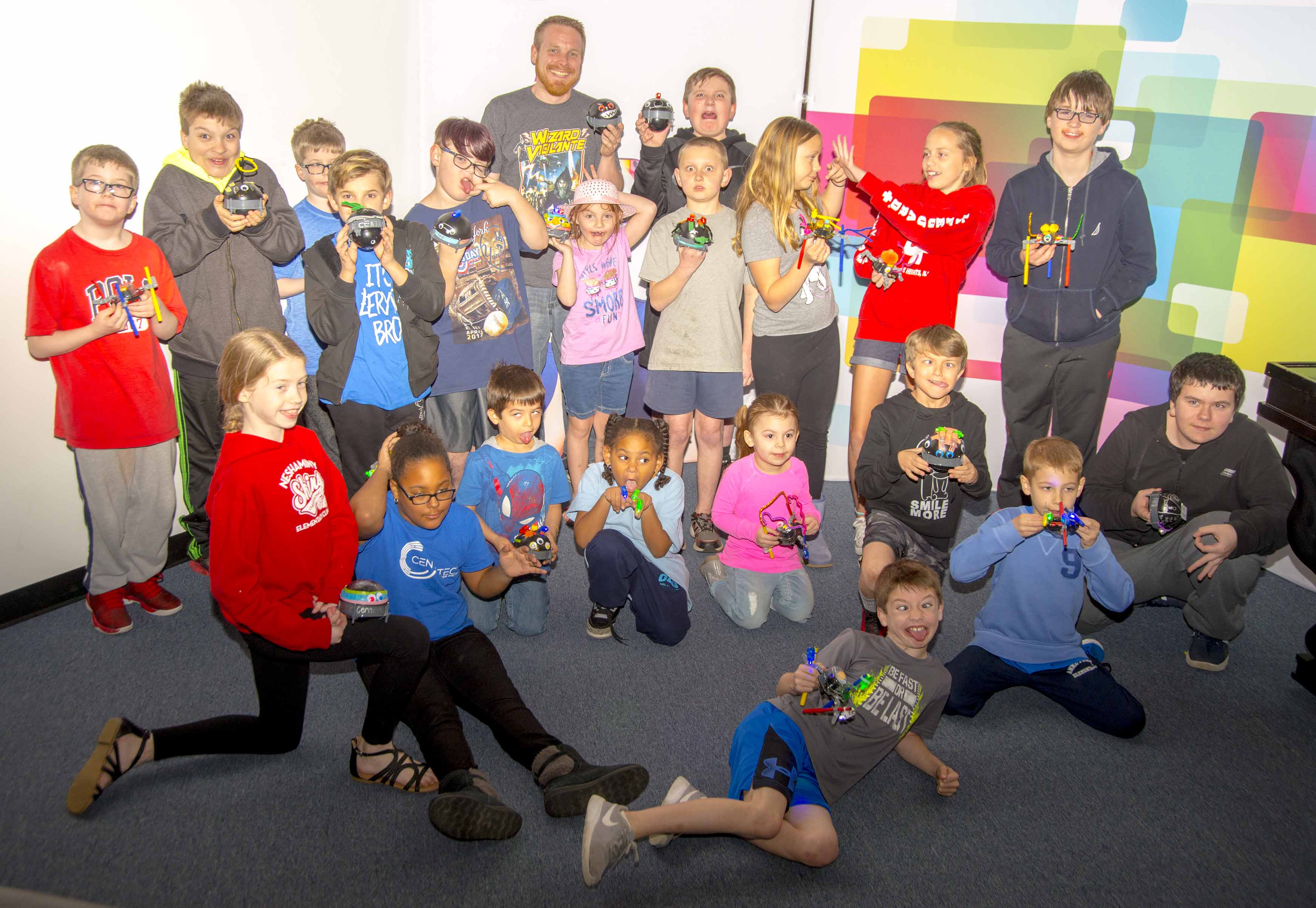Third Grade Class Enters Virtual Reality: 90 Students, Aged 8-9, Experience a Field Trip to Location Based VR & STEM Center.
Who / What?
A group of 90 Third Grade students, 8 & 9 years old with little-to-no prior VR exposure, visited an immersive Virtual Reality & STEM education center where they participated in educational VR experiences.
Why?
The major focus of the Elementary School is STEAM (Science, Technology, Engineering, Art, & Math). Virtual Reality encompasses all of the attributes, especially when curated and presented in an educational setting.
Where?
Centertec, a Location-Based Virtual Reality & STEM education center headquartered in Langhorne, PA - suburban Philadelphia.
When?
March, 2019, 10am-1pm, on a Friday. Students left their school for the field trip in the beginning of the day and arrived at their destination full of energy!
Educational Technology
Virtual Reality is the latest advancement in Educational Technology, enabling teachers to fully engage students and bring learning lessons to life. While still new, with the first commercial headsets only 3 years old (Spring, 2016), implementing Virtual Reality in a school setting can prove both expensive and cumbersome if not introduced properly. Colleges and some high schools may adopt new technology early, but elementary and middle schools are often the last to experience said tech in school.
A third grade classroom in suburban Philadelphia expressed interest in Virtual Reality after centertec provided, as a part of their grant-for-schools program, a free lesson on location at their school. As an inclusive part of the lesson, a VR teacher arrived with 30 Virtual Reality goggles and facilitated a full 1 hour lesson which ranged from outer space, to dinosaurs, to geography and much more. Because the students and teachers enjoyed the experience so much, the entire 3rd grade class – consisting of 4 separate 23-student classrooms – booked a field trip to centertec’s headquarters for a more immersive opportunity to experience Virtual Reality.
The Space
centertec is a 6,000 square foot Virtual Reality & STEM educational center headquartered inside a suburban- Philadelphia mall (the Oxford Valley Mall). The space consists of 36 Virtual Reality stations, each with its own headset combined with a mounted TV to mirror what each headset sees. Additionally there is a large, open classroom, with tables, chairs, a projector, and STEM activities along with a smaller private room. Additionally, there are ample couches and space for teachers and students waiting to play.
Experiences in Virtual Reality & Beyond
In planning for the Field Trip, the head teacher provided centertec with a brief outline of their curriculum and learning objectives for that year. With that information, centertec developed a custom curated plan for the students. Each of the four classes maintained their groups within centertec and rotated to each of the 4 stations. Upon arrival to centertec, students gathered for a brief overview of the space and then separated into their 4 respective stations around the facility 30-40 minute rotations.
Ancient Egypt
A digital capture, using photogrammetry, of Queen Nefertari’s Tomb provided a room-scale experience where students view 100% accurate recreation of one of the most historic archeological discoveries referred to as the “Sistine Chapel of Egypt”. This experience has very basic controls which is conducive for ease-of-use for those new to VR.

Architecture
Virtual Reality is the ideal platform to showcase locations, and designs, otherwise inaccessible for students: like on top of the tallest building in the world (Burj Khalifa, Dubai), or alongside some of the great bridges. Classes gathered in a private room with 30 VR goggles and a teacher guided through exciting locations around the Universe – outer space included.

Geography
Mapping and geography were a major curriculum focus for the third graders, in school, so a Virtual Reality experience allowing them to travel the globe was well received by teachers and students. Starting with their school as a reference point, students had the option to visit Ellis Island, Egypt, or fly around the world to a destination that interested them personally.

Physics
In addition to VR, students got tactile physics and engineering experience by building catapults out of popsicle sticks and rubber bands. Students learned about energy (kinetic & potential), simple machines like levers/fulcrums, how to create a hypothesis and following directions. They were given an assortment of objects to shoot, safely, while measuring the distance and recording their results.

Outcomes
Students experienced 3D immersive environments and learned the fundamentals of Virtual Reality and 3D spatial awareness while learning about history, geography, and physics. Each student had opportunities to use high-end VR with 6 degrees of freedom tracking and also to build a catapult. Feedback from the trip was overwhelmingly positive, students all enjoyed themselves.









